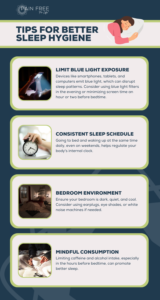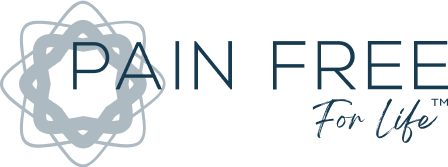 As the amber hues of autumn give way to the stark chill of winter, the shortened days cast more than just long shadows – they influence our mood and energy. According to the American Psychological Association, about 4-6% of the U.S. population suffers from Seasonal Affective Disorder (SAD), with a further 10-20% experiencing mild SAD symptoms.
As the amber hues of autumn give way to the stark chill of winter, the shortened days cast more than just long shadows – they influence our mood and energy. According to the American Psychological Association, about 4-6% of the U.S. population suffers from Seasonal Affective Disorder (SAD), with a further 10-20% experiencing mild SAD symptoms.
Renowned author and therapist Dr. Norman Rosenthal once said,
“Winter blues is a kind of hibernation reaction.”
And it’s true! Many of us feel the weight of diminishing daylight. But imagine if there was a solution that went beyond the surface and revitalized you from within, at the very cellular level? Enter the Mitochondrial Recharge Protocol – your beacon of hope amidst the seasonal gloom! Tune in to learn about the Mitochondrial Recharge Protocol, supplements for SAD, how your diet plays into the “winter blues,” and more!
Understanding Seasonal Affective Disorder (SAD)
Seasonal Affective Disorder (SAD) is a subtype of major depression that appears and disappears with the change of seasons. While many commonly associate it with the colder, darker months of fall and winter, some people do experience SAD during the spring and summer months. The primary distinguishing feature of SAD is its predictable seasonal pattern.
Why does it occur?
The precise cause of SAD has yet to be entirely understood. Still, it’s believed to be closely tied to our body’s circadian rhythm, which is the natural internal process that regulates the sleep-wake cycle and repeats roughly every 24 hours. Sunlight plays a pivotal role in maintaining this rhythm. As days become shorter in certain seasons, the reduced amount of sunlight can disrupt our internal clock. This disturbance can lead to imbalances in serotonin, a neurotransmitter that affects mood, and melatonin, a hormone that regulates sleep and mood.
It’s essential to understand that while many of us may feel a bit “down” or “blue” with the changing seasons, SAD is a clinical disorder that has a significant impact on one’s daily life. If you or someone you know is exhibiting these symptoms and suspect it might be SAD, it’s crucial to seek medical advice or counseling. Treatment options like light therapy, psychotherapy, supplements, and medication can help manage the symptoms and improve the quality of life for those affected.
Circadian Rhythm: The Body’s Natural Clock
Our bodies operate on a natural timekeeper known as the circadian rhythm. This intricate system oversees our sleep-wake cycle, regulates body temperature, dictates hormone secretion, and more. One of the primary external cues it relies upon is the balance of light and darkness. The rhythm can be likened to an internal orchestra conductor, synchronizing various biological processes to ensure the body functions harmoniously.
As the seasons change and day length varies, our exposure to natural light shifts. Shorter days, especially in winter, can sometimes throw this rhythm out of balance. When this happens, we might experience feelings of fatigue, mood swings, and even depression. It’s paramount to understand the workings of the circadian rhythm and its link to sleep hygiene, as adequate sleep is vital for both mental and physical health.

Tips for Better Sleep Hygiene:
- Limit Blue Light Exposure: Devices like smartphones, tablets, and computers emit blue light, which can disrupt sleep patterns. Consider using blue light filters in the evening or minimizing screen time an hour or two before bedtime.
- Consistent Sleep Schedule: Going to bed and waking up at the same time daily, even on weekends, helps regulate your body’s internal clock.
- Bedroom Environment: Ensure your bedroom is dark, quiet, and cool. Consider using earplugs, eye shades, or white noise machines if needed.
- Mindful Consumption: Limiting caffeine and alcohol intake, especially in the hours before bedtime, can promote better sleep.
Further Resources for Healthy Sleep :
To delve deeper into the significance of sleep and ways to improve your sleep quality, consider the following resources:
- 3 Surprising Effects of Sleep Deprivation and 4 Natural Fixes: This article sheds light on the often overlooked consequences of poor sleep and provides natural solutions.
- 5 Sleep Myths Busted and Our 3 Favorite Natural Sleep Aids: Separate fact from fiction when it comes to common sleep misconceptions and explore some effective natural aids.
- Can’t Sleep? Try Our Top 3 Holiday Sleep Tea Recipes: A delightful read offering natural tea recipes that not only soothe your palate but also promote better sleep.
By recognizing the importance of the circadian rhythm and incorporating better sleep hygiene practices, we can pave the way for healthier sleep patterns and overall well-being.
Introducing the Mitochondrial Recharge Protocol
Within our cells lies the mitochondria, often termed the powerhouse because of its role in producing energy-rich molecules like ATP. The Mitochondrial Recharge microcurrent protocol aims to optimize the functioning of mitochondria, ensuring every cell in the body is charged and energetic. This protocol leverages the benefits of microcurrent therapy to bolster ATP production by up to 500%, fighting off symptoms like brain fog and fatigue.
What Is Mitochondrial Recharge Protocol and What It Means For Your Health
LEARN MORE BY WATCHING THE VIDEO BELOW:
Mental Wellbeing with Microcurrent
Beyond the remarkable benefits of the Mitochondrial Recharge microcurrent protocol, there exists a plethora of innovative strategies that harness the power of microcurrent to fortify mental health, especially during the daunting shorter days of the year. One noteworthy technique is Trigeminal Nerve Stimulation (TNS), which focuses on stimulating the trigeminal nerve. This nerve plays a pivotal role in mood regulation and, when correctly stimulated, can alleviate symptoms of depression and anxiety.
The use of Ear Clips for microcurrent applications is also gaining traction. These ear clips are known for their exceptional stress-relieving properties, offering a direct route to calm the mind. Another exciting frontier in microcurrent therapy is Vagus Nerve Stimulation (VNS). By targeting the vagus nerve, which connects the brain to various vital organs, VNS can enhance mood, improve sleep, and even boost digestive health.
Lastly, don’t underestimate the power of Grounding or “Earthing”. This technique, which involves direct skin contact with the earth, can harmonize physiological processes, reduce inflammation, and enhance overall mental tranquility.
Supplementing Against SAD: A Scientific Insight
While light therapy and microcurrent protocols are gaining prominence in SAD treatments, the power of specific supplements shouldn’t be overlooked. Research has increasingly highlighted the potential benefits of particular supplements in combating SAD symptoms. One of the most studied is Vitamin D. Given that our primary source of Vitamin D is sunlight, its deficiency during shorter days can exacerbate SAD symptoms. Studies have shown that Vitamin D supplementation can improve mood and mitigate depressive symptoms in those with low levels.
Another supplement, Omega-3 fatty acids, found predominantly in fish oils, has shown promise in alleviating depression due to its anti-inflammatory properties and its role in neurotransmitter function. Additionally, St. John’s Wort, a natural herb, has been used traditionally in many cultures to treat mild to moderate depression, and some clinical trials have supported its efficacy. However, it’s crucial to consult with a healthcare professional before starting any new supplement regimen, as interactions with other medications or specific conditions can occur.
Eating to Combat SAD: The Diet-Depression Connection
The foods we consume not only affect our physical health but also have a profound impact on our mood and emotional well-being. During the colder months, when the risk of Seasonal Affective Disorder (SAD) is heightened, our dietary choices can play a pivotal role in managing and even countering its symptoms.
- The Gut-Brain Axis: Emerging research has highlighted the significant connection between our gut and our brain, often termed the gut-brain axis. The microbiome in our digestive system produces neurotransmitters, and any imbalance can influence our mood. Foods rich in probiotics, like yogurt, kefir, and fermented vegetables, can help maintain a healthy gut flora balance, potentially aiding in mood regulation.
LEARN MORE ABOUT THE GUT-BRAIN AXIS HERE

- Omega-3 Fatty Acids: As previously mentioned, Omega-3s found in fatty fish like salmon, mackerel, and sardines have anti-inflammatory properties and play a role in neurotransmitter function. Regular intake of these can offer a protective shield against depressive symptoms.
- Complex Carbohydrates: Serotonin, often termed the “feel-good” neurotransmitter, is influenced by carbohydrate intake. Opting for complex carbohydrates like whole grains, beans, and lentils can provide a steady energy supply and promote a stable mood.
- Vitamin D-Rich Foods: With limited sunlight during the winter months, incorporating foods rich in Vitamin D can be beneficial. These include fortified dairy products, fatty fish, and egg yolks.
- Limit Sugar and Processed Foods: Excessive sugar and processed foods can cause fluctuations in blood sugar levels, leading to mood swings and energy crashes. Minimizing their intake can help stabilize their mood and energy levels. Learn more about which inflation foods to avoid here.
- Antioxidant-Rich Foods: Berries, nuts, dark chocolate, spinach, and artichokes are loaded with antioxidants that combat oxidative stress, which has been linked to depression.

- Stay Hydrated: Dehydration can impact mood and cognitive function. Drinking adequate water, electrolyte drinks, bone broth and consuming hydrating foods can keep the brain well-nourished and active. Explore tips for staying hydrated here.
Incorporating these dietary strategies can offer a holistic approach to combating SAD. By making intentional food choices, we can potentially influence our mood, energy levels, and overall well-being. While diet alone might not replace other SAD treatments, it can serve as a valuable tool in the holistic management of seasonal depression.
The Science of Photobiomodulation
Now, let’s talk about the technology helping naturally treat SAD! Photobiomodulation, or PBM for short, is a groundbreaking technique that uses light to influence brain activity. Recent research covering studies up to 2019 shows that PBM might be a game-changer for people with psychological issues like depression and stress. Interestingly, it’s not just for those with health problems; even healthy individuals might see benefits.
So, how does it work? Even though experts are still figuring out the best settings, two light wavelengths stand out: one at 810 nm, which helps with depression, and another at 1064 nm, great for enhancing our thinking and cognition. Imagine a specific type of light therapy that, when applied to the head, can potentially boost your mood and brain function!
The research suggests that to get the best results, it’s ideal to have this light therapy once a week, focusing on specific areas of the brain. All in all, PBM is shaping up to be a safe and promising way to help our minds function better.
Traditional Light Therapy Lamps:
Traditional light therapy, often referred to as bright light therapy (BLT) or simply light therapy, typically involves exposure to bright light in the range of 10,000 lux, which is meant to mimic natural sunlight. It’s been a go-to treatment, especially for people suffering from Seasonal Affective Disorder (SAD), a form of depression that usually occurs in the winter months when natural light is limited.
Several studies have shown that sitting in front of a light therapy lamp for about 20-30 minutes a day can lead to:
- Enhanced mood and energy.
- Resetting the body’s internal clock or circadian rhythm helps with sleep issues.
- Reducing the symptoms of SAD and non-seasonal depression.
However, these lamps are different from tanning lamps and don’t emit UV rays, making them safe for regular use. The idea behind these lamps is to replicate the positive effects of natural sunlight, especially during those gloomy winter days.
Comparison with Photobiomodulation (PBM):
While both light therapy and PBM involve the use of light for therapeutic benefits, there are distinct differences:
- Purpose & Mechanism: Traditional light therapy aims to mimic sunlight, helping to regulate mood and sleep-wake cycles. PBM, on the other hand, uses specific light wavelengths to directly influence brain activity and cellular functions.
- Wavelengths: Light therapy lamps typically use a broad spectrum of bright white light (without UV rays). In contrast, PBM uses specific light wavelengths (like 810 nm or 1064 nm) for targeted effects, such as mood enhancement or cognitive function boost.
- Depth of Penetration: PBM is designed to achieve deep penetration into the brain, making it potentially effective for a broader range of psychological and neurological conditions. Traditional light therapy primarily affects the eyes and skin, thereby influencing the brain’s internal clock.
- Application Area: Light therapy lamps typically shine on the face and eyes, while PBM devices might be applied directly to specific areas of the head to target particular regions of the brain.
In summary, while both traditional light therapy and PBM offer therapeutic benefits through light exposure, their applications, mechanisms, and results can differ. Both have their unique places in therapeutic regimens, and the best choice often depends on the specific needs and conditions of the individual.
Microcurrent: Holistic Hope for SAD Sufferers
In a nutshell, as the year winds down and days become shorter, these holistic methods can be your go-to tricks for feeling energetic, positive, and at ease.
Understanding and addressing the challenges of SAD, especially during shorter days, is crucial. The Mitochondrial Recharge Protocol, combined with light therapies, attention to diet, supplements, and proper sleep hygiene, offers natural solutions to boost mood and energy during these challenging times. Questions about getting started with microcurrent therapy? Check out our handy guide here!
Sources cited:
https://www.psychologytoday.com/us/conditions/seasonal-affective-disorder
https://www.normanrosenthal.com/
https://www.sciencedirect.com/science/article/abs/pii/S0149763420306035





